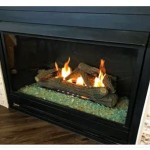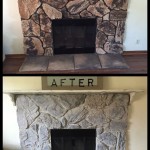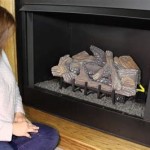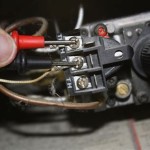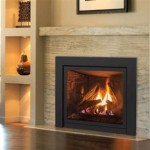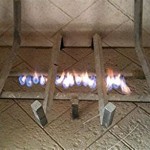How To Put Stacked Stone Over a Brick Fireplace: A Comprehensive Guide with Mantel Ideas
Updating a brick fireplace with stacked stone is a popular home improvement project that can dramatically transform the look and feel of a living space. This process involves adhering thin pieces of natural or manufactured stone veneer directly onto the existing brick surface. The result is a more textured, visually appealing fireplace surround. This article provides a detailed guide on how to install stacked stone over a brick fireplace, while also exploring various mantel ideas to complement the new stone finish.
Successfully executing a stacked stone fireplace makeover requires careful preparation, proper installation techniques, and a thoughtful approach to design. The complexity of the project depends on the size and shape of the fireplace, the type of stone selected, and the desired finished look. Before starting, consider engaging a professional contractor if unfamiliar with masonry work or if structural modifications are planned.
Preparing the Brick Surface for Stone Veneer
The success of the stacked stone installation hinges on proper preparation of the underlying brick surface. This stage ensures a strong and lasting bond between the brick and the stone veneer. Any loose, damaged, or unstable brick needs to be addressed before proceeding. The primary steps in preparing the brick surface include cleaning, repairing, and applying a bonding agent.
The first step is thoroughly cleaning the brick. This involves removing any dirt, dust, soot, paint, or previous coatings that may interfere with adhesion. A wire brush can effectively scrub away loose debris. For stubborn grime, a solution of trisodium phosphate (TSP) and water can be used, following the manufacturer's instructions and ensuring adequate ventilation. Rinse the brick surface thoroughly with clean water and allow it to dry completely before moving on to the next step.
Inspect the brick for any cracks, chips, or loose mortar. Damaged bricks should be replaced with new ones that match the existing brick in size and texture. If the mortar joints are crumbling or missing, they need to be repointed. Repointing involves carefully removing the old mortar and applying fresh mortar to fill the gaps. Allow the new mortar to cure completely before proceeding with the stone installation. A polymer-modified mortar is generally recommended for its enhanced bonding properties and durability in exterior or high-moisture environments.
After cleaning and repairing the brick, apply a bonding agent to the surface. A bonding agent is a liquid material that enhances the adhesion between the brick and the mortar used to install the stone veneer. Choose a bonding agent specifically designed for masonry surfaces and follow the manufacturer's instructions for application. Typically, the bonding agent is brushed or rolled onto the brick and allowed to dry until it becomes tacky. This creates a rough surface that the mortar can grip onto, ensuring a strong and lasting bond.
Installing Stacked Stone Veneer
With the brick surface properly prepared, the next step is installing the stacked stone veneer. This process involves carefully applying mortar to the back of each stone and pressing it firmly onto the prepared brick surface. Attention to detail is crucial to ensure a uniform and aesthetically pleasing finish. The following steps outline the installation process:
Before starting, dry-fit the stones to determine the layout and pattern. This allows for visual assessment of the stone arrangement and adjustments as needed to achieve the desired aesthetic. Experiment with different stone sizes, shapes, and colors to create a balanced and visually appealing design. Cutting stones might be necessary to fit around corners, edges, or other architectural features. Use a masonry saw or grinder with a diamond blade to cut the stones to the desired size and shape. Always wear safety glasses and a dust mask when cutting stone.
Mix the mortar according to the manufacturer's instructions. Use a polymer-modified mortar specifically designed for adhering stone veneer. Add water gradually to the dry mortar mix and stir until you achieve a smooth, workable consistency similar to peanut butter. Avoid adding too much water, as this can weaken the mortar and compromise its bonding strength.
Apply a generous layer of mortar to the back of each stone using a trowel. Ensure that the entire back surface is covered with mortar, paying particular attention to the edges. The mortar should be thick enough to create a strong bond but not so thick that it oozes out excessively when the stone is pressed onto the brick surface.
Press the stone firmly onto the prepared brick surface, wiggling it slightly to ensure good contact with the mortar. Maintain consistent spacing between the stones. Using shims or spacers can help to achieve uniform joint widths. Remove any excess mortar that squeezes out from between the stones using a pointing tool or a small trowel. Clean the stone surfaces with a damp sponge to remove any mortar residue before it dries. Work in small sections, installing a few rows of stones at a time, to prevent the mortar from drying out before the stones are properly set. Allow the mortar to cure completely according to the manufacturer's instructions before applying any sealant or protective coatings.
Mantel Ideas to Complement Stacked Stone
Selecting the right mantel is crucial to complete the aesthetic and functional design of the fireplace. The mantel serves as a focal point and can significantly enhance the overall appearance of the stacked stone surround. There are numerous mantel options available, ranging from rustic wood beams to sleek, contemporary shelves. The ideal mantel choice depends on personal preferences, the architectural style of the room, and the type of stacked stone used.
A reclaimed wood beam mantel offers a rustic and natural look that complements the texture of stacked stone. Reclaimed wood beams are typically sourced from old barns, factories, or other structures, giving them a unique character and history. These beams often feature natural imperfections, such as knots, cracks, and weathering marks, which add to their charm. Reclaimed wood mantels can be finished with a variety of stains or sealants to enhance their natural beauty and protect them from moisture. They work well in both traditional and contemporary settings, adding warmth and character to the fireplace area.
For a more modern and minimalist aesthetic, consider a floating shelf mantel. Floating shelves are typically made of wood, metal, or composite materials and are mounted to the wall without visible brackets. This creates a clean and streamlined look that complements the sleek lines of contemporary fireplaces. Floating shelf mantels can be used to display artwork, photographs, candles, or other decorative items. They are available in a wide range of sizes, shapes, and finishes, allowing for customization to match the surrounding décor.
A cast stone mantel offers a more formal and elegant look that complements the sophistication of stacked stone. Cast stone is a manufactured material that resembles natural stone in appearance and texture. It is typically made from a mixture of cement, aggregates, and pigments. Cast stone mantels can be molded into a variety of intricate designs, including classical columns, arches, and ornate carvings. They are durable, fire-resistant, and require minimal maintenance. Cast stone mantels are an excellent choice for traditional homes or those seeking a more refined and timeless aesthetic.
When selecting a mantel, consider the scale and proportion of the fireplace and the surrounding room. A mantel that is too large or too small can look out of place and detract from the overall design. The mantel should be positioned at a comfortable viewing height, typically around 12 inches above the firebox opening. Also, ensure the mantel adheres to local building codes regarding clearances to combustible materials, maintaining safe distance from the fireplace opening.
Incorporating stacked stone over a brick fireplace provides an effective transformation, adding texture and visual interest to any room. The selection of a complementary mantel enhances the impact, creating a focal point that balances aesthetics and functionality. Careful preparation of the brick surface, precise installation of the stone veneer, and a well-chosen mantel are important for achieving a successful and visually appealing fireplace makeover that adds value and style to the home.

12 Stacked Stone Fireplace Ideas For Optimal Coziness Angi

How To Update Your Fireplace With Stone Evolution Of Style

Styling The Fireplace Mantle For Spring North Country Nest

Fireplace Mantel Installation Before And After
:max_bytes(150000):strip_icc()/CharbonneauInteriors_2-35a807e7e764444e9d86c014035046a6.png?strip=all)
20 Stacked Stone Fireplace Ideas To Warm Up Your Space

Our Favorite Fireplace Ideas And Inspo

Light Stone Fireplace Inspiration Taryn Whiteaker Designs

B S Diy Stacked Stone Fireplace Surround Genstone

How To Reface A Brick Fireplace With Stone 5 Simple Steps

How To Overgrouting A Stone Fireplace Little Reesor House
Related Posts

